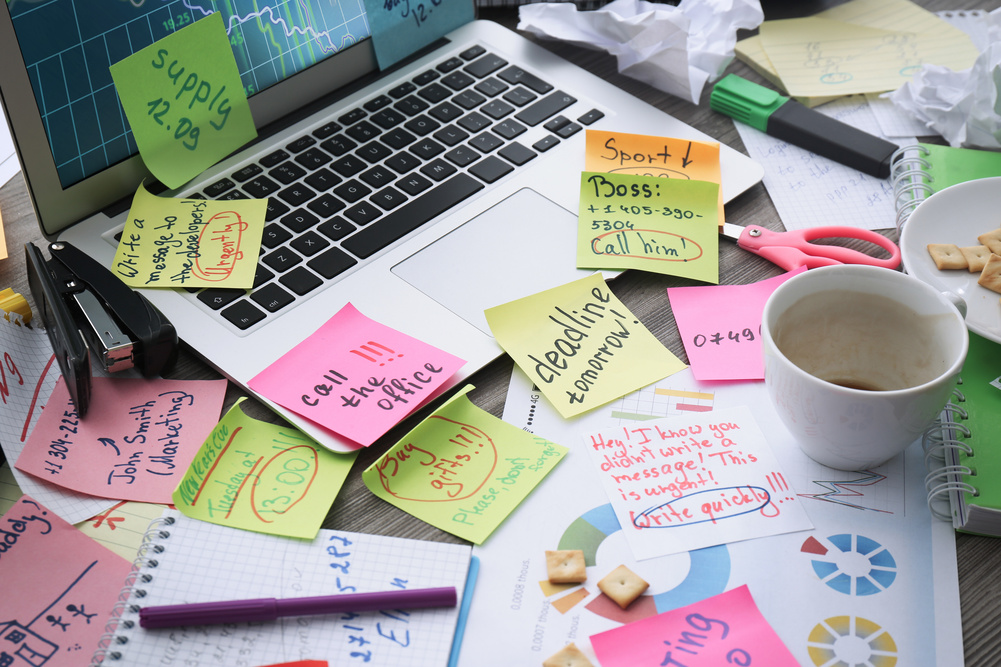The world of workplace culture, employee health and wellbeing is evolving fast. Suppliers in this space need to stay agile in order to adapt. They must also have a clear vision for the future.
To see who is really thinking ahead with this agenda, Francis Barham, Event Director for our sister events The Watercooler and The Office, threw down the gauntlet. He invited suppliers to share their five year vision – along with an explanation of how we will achieve this. Including, anticipated obstacles and what’s needed to overcome them.
We received a wide range of entries and many resonated clearly with our mission at www.makedifference.media. I was particularly impressed by the picture painted by Charlotte Hunter from At Work Wellbeing. Her humanist workplace – with a collective mindset that creates the perfect conditions for optimal mental wellbeing, where stress is not a burden but a motivating force that drives people to achieve their best, and physical health is equally prioritised – is a utopia I’d like to see all employers aspiring to.
We’ll publish Charlotte’s entry in the coming weeks, as well as some of the other stand-out pieces.
However, this week is dedicated to the winner; Quantum Coaching’s comprehensive vision for workplace culture, employee health and wellbeing. This stood out above the rest because it gives an inspiring, holistic and also practical perspective, is non-promotional and – above everything else – it meets the brief. See what you think…
In the ever-evolving landscape of the workplace, the next five years present a pivotal opportunity to reshape organisational culture, prioritise employee health, and enhance overall wellbeing. The COVID-19 pandemic has fundamentally shifted the way we work, highlighting the need for flexible, supportive, and inclusive workplace environments.
As we look ahead, it’s crucial to envision a future where workplace culture and employee wellbeing are not just buzzwords, but foundational elements of every organisation’s strategy. We’ll see a greater utilisation of tech to provide on-demand personalised tools for individual wellbeing alongside a number of other developments.
This article explores a comprehensive five-year vision for workplace culture, employee health, and wellbeing, outlining the steps needed to achieve this vision and the challenges we may face along the way.
1. The Vision for Workplace Culture and Employee Wellbeing
a. A Culture of Inclusivity and Diversity – In the next five years, successful organisations will foster a culture of inclusivity and diversity. This means not only embracing a diverse workforce but also ensuring that all employees feel valued, respected, and included. This culture will be characterised by transparent communication, equal opportunities for growth, and a genuine commitment to diversity at all levels of the organisation.
b. Holistic Employee Wellbeing – The concept of employee wellbeing will expand beyond traditional physical health measures to encompass mental, emotional, and financial wellbeing. Organisations will recognise that a holistic approach to wellbeing is essential for fostering a productive and engaged workforce. This will include providing resources for mental health support, promoting work-life balance, and offering financial wellness programmes.
c. Flexible and Adaptive Work Environments – The future workplace will be defined by flexibility and adaptability. This includes embracing hybrid work models that combine remote and in-office work, flexible scheduling, and a focus on outcomes rather than hours worked. Such environments will empower employees to balance their professional and personal lives more effectively, leading to increased job satisfaction and productivity.
d. Employee Empowerment and Development – Organisations will prioritise continuous learning and development, equipping employees with the skills and knowledge needed to adapt to changing job requirements. This includes investing in professional development programmes, mentorship, and harnessing tech to provide individual solutions for wellbeing. Empowering employees in this way not only enhances their capabilities but also fosters a sense of purpose and engagement.
2. Pathways to Achieving the Vision
a. Leadership Commitment and Role Modelling – Achieving this vision requires a top down approach, where leaders are committed to building and maintaining a positive workplace culture. Leaders must actively demonstrate the values and behaviours they wish to see throughout the organisation. This includes promoting transparency, encouraging open dialogue, and taking actionable steps toward diversity and inclusion.
b. Investment in Employee Wellbeing Programmes – Organisations must invest in comprehensive wellbeing programmes that address the physical, mental, and emotional needs of employees. This includes offering health and wellness benefits, providing access to mental health resources, and promoting healthy lifestyle choices, in concert with providing meaningful tools for employees to access and make use of their options. Financial wellness programs, such as retirement planning and debt management, will also be crucial in supporting employees’ overall wellbeing.
c. Adoption of Technology and Tools – The integration of technology will play a critical role in creating flexible and adaptive work environments. This includes utilising digital collaboration tools, implementing remote work solutions, and leveraging data analytics to understand employee needs and preferences. Technology can also be used to streamline processes, reduce workload, and enhance communication within the organisation. Tech will be important for offering employees a bespoke, on-demand service, and we’ll see things like AI wellbeing assistants begin to appear.
d. Building a Culture of Continuous Feedback – Regular feedback is essential for continuous improvement and employee engagement. Organisations should establish mechanisms for both giving and receiving feedback, including regular performance reviews, employee surveys, and open forums for discussion. This feedback culture should be constructive, supportive, and focused on growth.
e. Fostering Community – With the growth in hybrid and remote working creating a real world environment where employees can meet up and interact will become increasingly important not only to foster wellbeing, but to help shape and drive company culture.
3. Obstacles to Overcome
a. Resistance to Change – One of the significant challenges in achieving this vision is resistance to change. Employees and leaders alike may be accustomed to traditional ways of working and may resist new approaches. Overcoming this obstacle requires clear communication about the benefits of change, as well as involving employees in the decision-making process to gain their buy-in and support.
b. Resource Constraints – Implementing comprehensive wellbeing programmes and flexible work models requires significant investment in terms of time, money, and resources. Smaller organisations or those facing financial constraints may struggle to allocate the necessary resources. To address this, organisations can explore partnerships with external providers, leverage technology to scale solutions, and prioritise initiatives that offer the greatest impact.
c. Balancing Flexibility with Organisational Needs While flexibility is crucial for employee wellbeing, it can also pose challenges in terms of maintaining productivity and meeting organisational goals. Striking the right balance requires clear guidelines and expectations, effective communication, and ongoing monitoring of outcomes to ensure that both employee needs and business objectives are met.
d. Addressing Diverse Employee Needs – Employee needs and preferences are diverse, and a one-size-fits-all approach to wellbeing and workplace culture will not be effective. Organisations must recognise and accommodate this diversity by offering a range of programmes and benefits that cater to different needs. This includes considering cultural differences, varying job roles, and personal circumstances.
4. What’s Needed to Overcome These Challenges
a. Clear Vision and Communication – To overcome resistance and resource constraints, it’s crucial for organisations to have a clear vision and communicate it effectively. Leaders should articulate the benefits of the new culture and wellbeing initiatives, setting out a roadmap for achieving the vision and addressing any concerns that arise.
b. Flexibility and Adaptability – Organisations must be flexible and adaptable in their approach, willing to make adjustments based on feedback and changing circumstances. This includes being open to new ideas, piloting initiatives before full implementation, and continuously evaluating the effectiveness of programs and policies.
c. Focus on Long-Term Benefits – While the investment in workplace culture and employee wellbeing may be substantial, organisations must focus on the long-term benefits. A healthy, engaged workforce leads to improved productivity, reduced turnover, and a positive employer brand. This long-term perspective can help justify the initial investment and sustain momentum over time.
d. Collaboration and Partnership – Building strong partnerships with external experts, including wellbeing consultants, mental health professionals, and technology providers, can help organisations overcome resource constraints and implement effective solutions. Collaboration with other organisations to share best practices and resources can also be beneficial.
Conclusion
The next five years present a unique opportunity to transform workplace culture and prioritise employee health and wellbeing. By fostering a culture of inclusivity, investing in holistic wellbeing programmes, investing in wellbeing tech, embracing flexible work models, empowering employees and creating in-person opportunities to mix and mingle, organisations can create environments where both employees and businesses thrive.
While challenges such as resistance to change, resource constraints, and diverse employee needs exist, they can be overcome through clear communication, flexibility, a focus on long-term benefits, and strategic partnerships. The future of work is not just about adapting to change; it’s about proactively shaping a workplace where everyone can succeed and thrive.
About Us: Quantum Coaching Limited

Claire and James Davis are the husband and wife team behind the multi-award winning wellbeing company Quantum Coaching Limited. In a previous life we both had corporate roles in London and, having been in the corporate world before starting multi-award winning 38 Degrees North in 2012, we know what it’s like and what’s needed to help employees and executives be healthy and happy.
We believe there’s a growing need for simple, balanced and uncomplicated strategies that dramatically improve the physical and mental health of employees and positively impact productivity.
Corporate clients we have worked with include CitiBank, KPMG, NBC Universal, AkzoNobel, Sodexo, Cisco, Google, Morrisons, Ignis and more…












